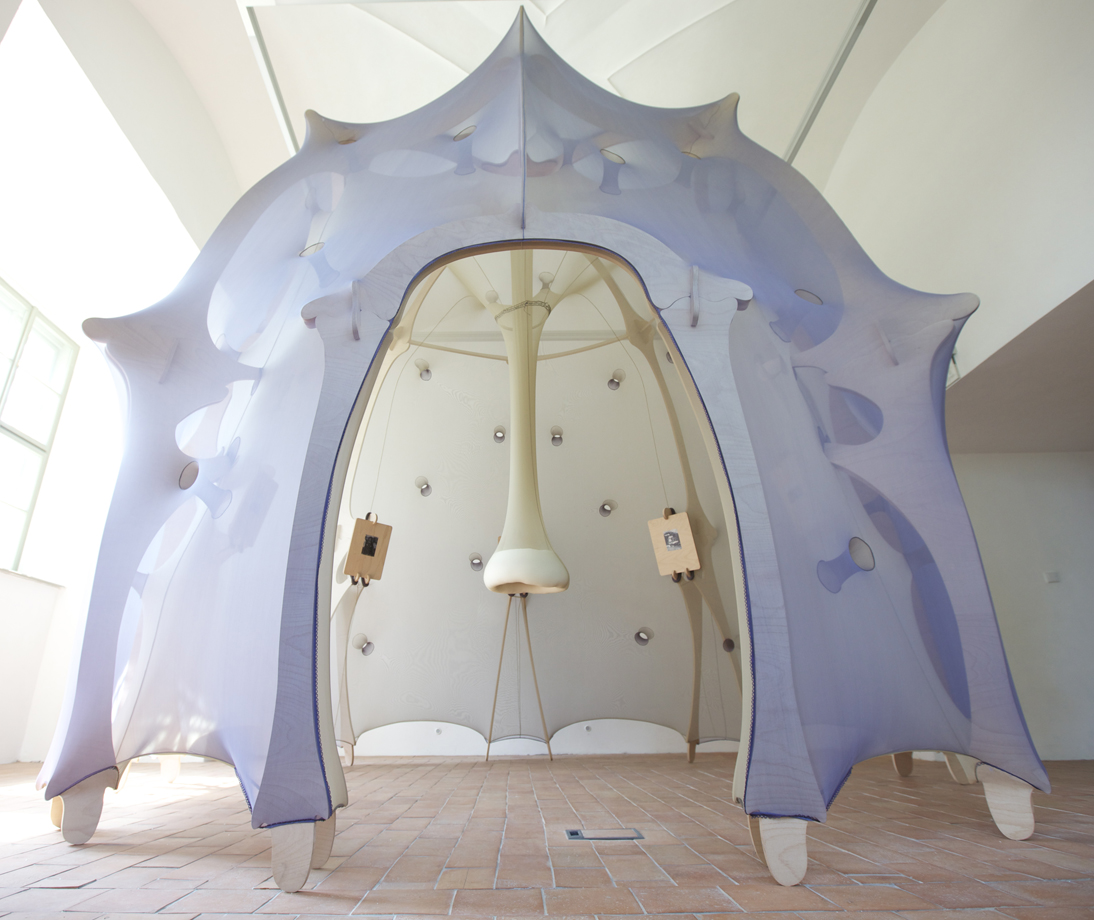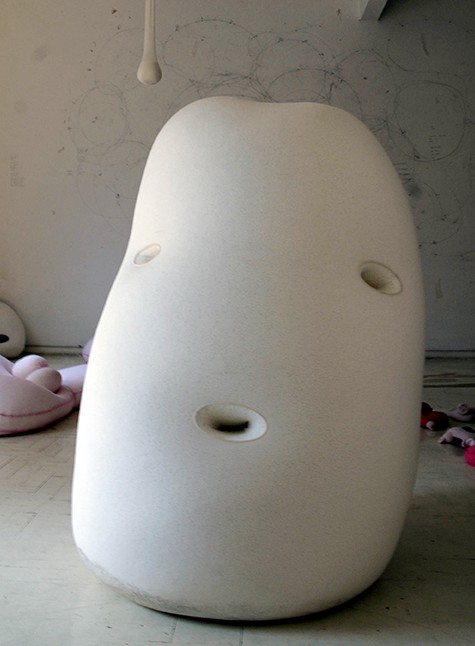Neto, Ernesto


Born 1964 in Rio de Janeiro, lives in Rio de Janeiro
You can touch, climb, sit or lie on Neto’s sculptures. Sometimes, you can even hear or smell them. Ernesto Neto was influenced by minimalism of the 1960s, and he continues with the reduction of form. However, as opposed to minimalists, who focused on pure geometric forms, his forms are biomorphic. Whether they resemble plant or body formations, his are always based on organic structures. Sometimes they are separate objects that you can crawl into like some kind of shelter, as with his “Humanoids” from 2001 (in this respect, Neto is not against associating them with prenatal experiences). In other cases, they are installations that extend throughout the whole room like spider webs or spread like mushrooms after the rain.
Such biomorphic forms are relatively rare in the history of European modern and con- temporary art. However, the material Neto uses is even more unusual. He sews his works together primarily with elastic or transparent hosiery material that he sometimes dyes, or other times, just leaves their natural flesh colour. The sewed forms are filled with Styrofoam balls or he stretches them over wooden structures. Hence, the objects hang like icicles from the ceiling of the exhibition spaces. Sometimes, he creates small caves or chapels. In any case, these non-mechanical, strange and shapeless forms hanging from the ceiling or lying on the floor show lightness, transparency, and weightlessness and often evoke strong erotic notions. Sometimes, hosiery “tears” are filled with spices, whose intoxicating scent then spreads throughout the room and increases the erotic effect of the objects and installations.
The body, skin, and their relationship to the space–these are the basic elements Neto works with. Therefore, he also stresses the importance of touching his sculptures as well as interacting with them. Whether it embraces the object, crawls through it or sits in it, the audience makes Neto’s work a unique experience through its actions.
Neto was one of the first international artists who was enthusiastic about the photography of Miroslav Tichý. When Tichý died in 2011, Neto erected a chapel from his traditional hosiery material and displayed reproductions of Tichý’s photos inside. He called the work Blue Mist Gray Girls. In Memoriam Miroslav Tichý.
